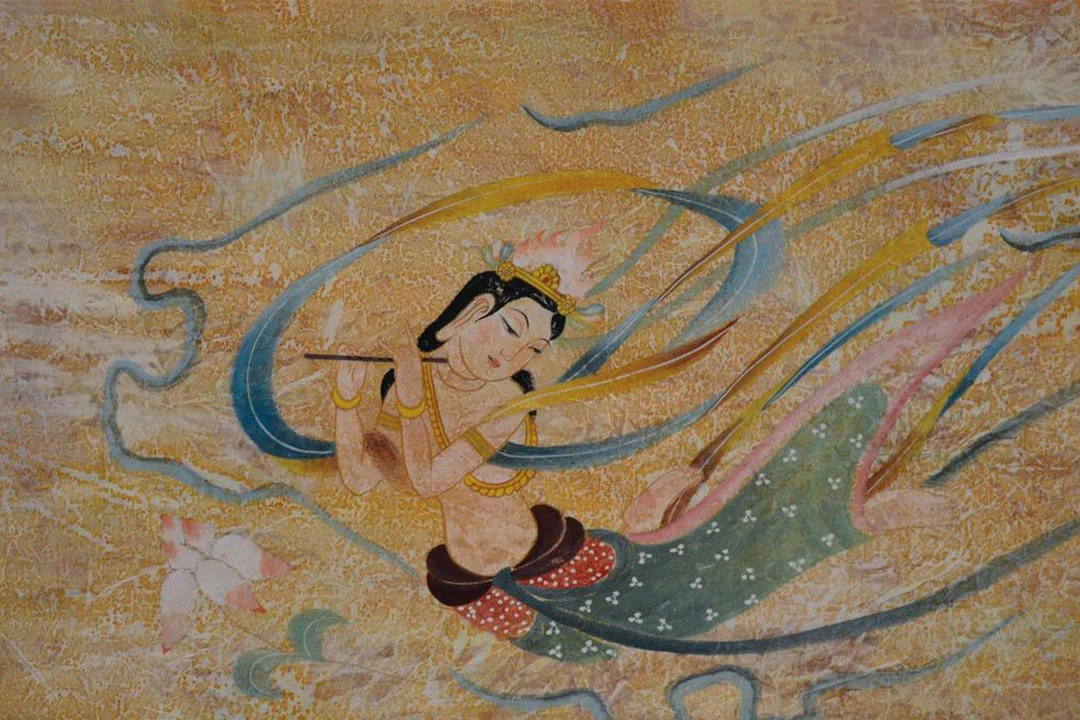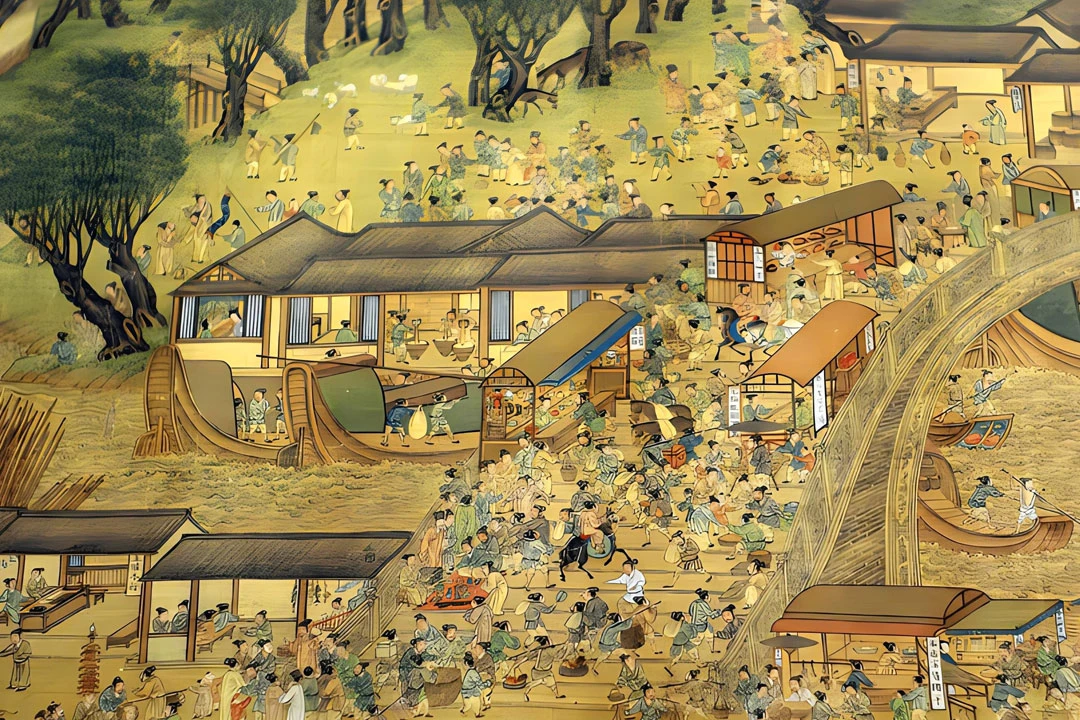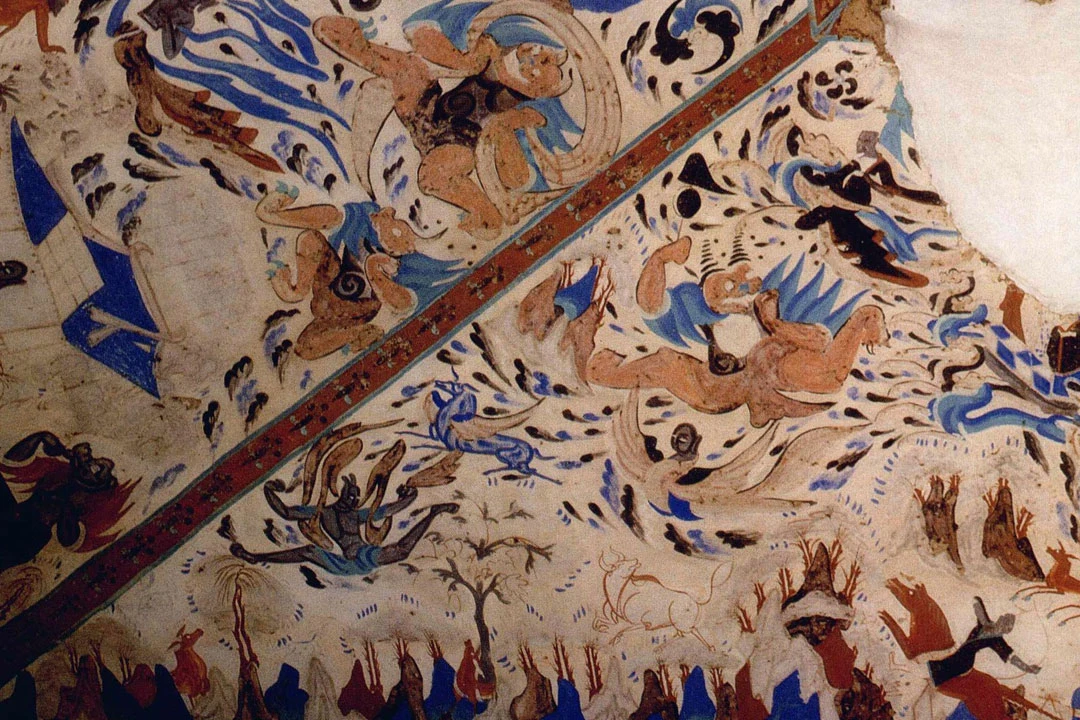In recent years, a fascinating cultural phenomenon has been sweeping across the globe, captivating the hearts and minds of fashion enthusiasts and history buffs alike. The resurgence of Hanfu, the traditional clothing of China's Han ethnic majority, has transcended its original borders and found a new audience on the international stage. This revival is not just a nostalgic nod to the past, but a vibrant celebration of cultural heritage that's making waves from the ancient caves of Dunhuang to the chic streets of Paris.
The Artisans Behind the Movement: Weaving Tradition into Modern Fashion
At the heart of this Hanfu renaissance are passionate artisans and entrepreneurs who are breathing new life into age-old designs. Take, for example, the story of Qin Weifeng and Zhou Wanchao, a millennial couple from Hangzhou who have become unexpected champions of traditional Chinese fashion. Their journey began in the textile mills of Chongxian, a once-thriving center of silk production in northern Hangzhou.
Qin and Zhou's venture into the world of Hanfu was serendipitous. As the demand for traditional silk bedding waned, the couple found themselves at a crossroads. Rather than abandoning their family's textile legacy, they saw an opportunity to pivot towards creating authentic Hanfu garments. Their deep understanding of fabrics, combined with Zhou's newfound passion for traditional Chinese aesthetics, allowed them to craft pieces that not only honor historical accuracy but also appeal to modern sensibilities.
The couple's workshop has become a hub for Hanfu enthusiasts, attracting both seasoned connoisseurs and curious newcomers. Their creations range from everyday wear inspired by Ming dynasty fashions to elaborate ceremonial robes that echo the grandeur of the Tang era. But what sets Qin and Zhou apart is their commitment to research and authenticity. Each piece they produce is a result of meticulous study of historical texts, ancient artwork, and archaeological findings.
From Dunhuang to the Digital Age: The Unexpected Influencers
While artisans like Qin and Zhou lay the foundation, it's the young enthusiasts who are catapulting Hanfu into the spotlight of global fashion. Take Xiao Yuzha, a Gen Z martial arts champion turned social media influencer from Xi'an. Xiao's journey with Hanfu began in her childhood, inspired by the wuxia films that dominated Chinese pop culture. Today, she combines her passion for traditional martial arts with her love for Hanfu, creating content that bridges the gap between ancient traditions and modern platforms.
Xiao's recent appearance in Paris, draped in a flowing Warring States period robe, became an instant sensation. As she performed a graceful sword dance against the backdrop of Parisian architecture, the juxtaposition of East and West created a visual spectacle that captivated onlookers and internet users alike. The video of her performance, shared casually on social media, garnered over 20,000 comments, sparking discussions about cultural identity, fashion, and the power of cross-cultural exchange.
But Xiao is not alone in her mission to bring Hanfu to the global stage. Influencers like Simiao are taking a more educational approach. Drawing inspiration from the murals of the Mogao Caves in Dunhuang, Simiao recreates historical costumes with painstaking attention to detail. Her recent visit to the Louvre, dressed in a Tang dynasty-inspired ensemble complete with an intricately designed phoenix crown, turned heads and sparked curiosity among museum-goers.
The Cultural Diplomacy of Fashion: Bridging East and West
The Hanfu movement's foray into international fashion scenes, particularly in cultural capitals like Paris, represents more than just a trend. It's a form of soft power and cultural diplomacy that's reshaping perceptions of Chinese culture abroad. As these young ambassadors don their elaborately crafted garments in foreign lands, they're not just showcasing fashion – they're opening dialogues about history, art, and cultural exchange.
The questions these Hanfu enthusiasts encounter abroad – "What country is this clothing from?" or "Is that an LV bag?" – reveal both the curiosity and misconceptions that still exist about Chinese cultural heritage. By proudly wearing the five-starred red flag on their sleeves or explaining the historical significance of their attire, these fashion-forward diplomats are educating the world about China's rich sartorial history.
Moreover, the Hanfu movement is fostering a renewed sense of cultural pride among young Chinese, both at home and abroad. It's a tangible way for them to connect with their roots and express their identity in an increasingly globalized world. The movement has also spurred a revival of traditional crafts, from silk weaving to embroidery, creating new economic opportunities in sectors that were once at risk of fading away.
As Hanfu continues to gain traction on the global stage, it's clear that this is more than just a passing fad. It's a cultural renaissance that's redefining how the world sees Chinese fashion and, by extension, Chinese culture. From the meticulous recreations of Dunhuang mural costumes to the fusion of ancient designs with modern aesthetics, Hanfu is proving that tradition and innovation can coexist beautifully.
The future of Hanfu on the global stage looks bright. As more designers, influencers, and everyday enthusiasts embrace this cultural treasure, we can expect to see Hanfu influencing mainstream fashion in unexpected ways. Perhaps soon, elements of Tang dynasty elegance or Ming era simplicity will be walking down runways in Milan, New York, and beyond.
The Hanfu movement reminds us of the power of clothing to tell stories, bridge cultures, and celebrate heritage. As these flowing robes and intricate headpieces continue to capture imaginations around the world, they carry with them the weight of history and the promise of cultural understanding. In a world that often seems divided, the universal language of fashion proves once again to be a powerful tool for bringing people together, one beautiful garment at a time.



